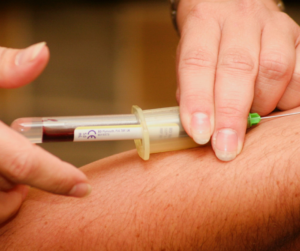Bethany Sterling MSN, CRNP, ANP-BC, AOCNP
What are IPMNS of the pancreas?
Intraductal papillary mucinous neoplasms (IPMNS) are benign mucin-producing neoplasms found in the main duct and/or side branch ducts of the pancreas. They are a subtype of pancreatic cystic lesions where patients may present with a single or multiple IPMNs. The true incidence and frequency of pancreatic cysts are unknown.1
Why are IPMNs important to identify?
These mucin-producing cystic lesions have the potential to develop into malignancy. Further, main duct IPMNs are at a higher risk of becoming malignant compared to side branch IPMNs.2 Identification, appropriate surveillance, and early intervention when concerning features arise are paramount. According to the National Cancer Institute‘s Surveillance, Epidemiology, and End Results Program, pancreatic cancers account for an estimated 3.3% of cancer cases and 8.5% of cancer deaths.3 It is one of the cancers that often presents at later stages making treatment more challenging. It is also important to note that patients with IPMNs are at a higher risk of developing colorectal cancer,4 thus reinforcing the importance of obtaining screening colonoscopies starting at age 45. Mirchev et al. also suggest that perhaps a more rigorous screening regimen should be initiated for those with IPMNs.4
How are IPMNs identified?
Often these lesions are found incidentally on computed tomography (CT) or magnetic resonance imaging (MRI) of the abdomen when a workup is pursued for symptoms including but not limited to abdominal pain, back pain, nausea, vomiting, and unexplained weight loss.
What are the risk factors related to the development of IPMNs?
Individuals with a family history of pancreatic ductal adenocarcinoma, diabetes, and pancreatitis are at risk for developing IPMNs.5 It is known that pancreatic cancer itself is linked to smoking. Lifestyle changes in general such as limiting or eliminating alcohol intake, maintaining a healthy weight, and avoiding diabetes can reduce the risk of cancer.
What do you do when you discover IPMNs?
Once an IPMN is identified on imaging the next step is to determine if surveillance, endoscopic ultrasound and fine needle aspiration (EUS/FNA), or surgery is needed. There are several existing guidelines published from 2006 to 2018 focusing on the management of pancreatic cysts,6 but they vary in recommendations. Elta et al. depict pancreatic cyst management according to the American College of Gastroenterology (ACG) 2018 guidelines (see Figure 1).7
MRI with cholangiopancreatography (MRI/MRCP) is the imaging of choice of most guidelines to evaluate and surveil these lesions and guide decision-making.6 Evaluation with EUS/FNA may be necessary if a clear indication for surgery based on clinical and radiographic findings alone is not identified.2
The ACG guidelines suggest EUS/FNA for features such as obstructive jaundice or acute pancreatitis secondary to the cyst, presence of mural nodule or solid component, main pancreatic duct (MPD) > 5 mm, change in the caliber of PD with upstream atrophy, cyst size ≥ 3 cm, or increase in cyst size ≥ 3 mm/year.7
When surgery is indicated, a referral to a surgeon in who routinely performs pancreatic surgeries where there is malignant potential is important for acquiring optimum surgical outcomes. Gaëtan-Romain notes that while the morbidity and mortality of pancreatic surgeries has decreased over time, postoperative morbidity ranges from 50% to 70%, with a mortality of 2% of 8%.8 The patient’s age, comorbidities, the malignant risk of the identified IPMN, and level of suspicion of malignancy are factors that are considered prior to surgery. A patient may require counseling for diabetes and or pancreatic insufficiency depending on the surgical procedure. The Enhance Recovery After Surgery (ERAS) protocol is utilized at many institutions to achieve early recovery after surgical procedures. There is a great need for counseling patients ahead of time for best outcome, and this requires a team that specializes and performs these surgeries regularly.
In summation, while IPMNs are a common incidental finding, the accurate evaluation and management of these benign lesions are critical due to their malignant potential. It is important to note that most IPMNs do not become cancer but require monitoring for changes suggestive of an evolving cancer. These evolving features may include a rapid change in size or size >3 cm, a dilated MPD, change in the caliber of PD with upstream atrophy, mural nodule or solid component and/or increase in size >3 mm/year.7 It is important that, once identified, specialists such as a gastroenterologist or gastrointestinal surgical oncologist with a team experienced in managing pancreatic cysts are utilized in the surveillance, work-up, and treatment of these lesions.

Bethany Sterling MSN, CRNP, ANP-BC, AOCNP, is an oncology clinical nurse specialist at Penn Medicine Chester County Hospital, in West Chester, PA.
References
- Patel, N., Asafo-Agyei, K.O., Osueni, A., Mukherjee, S. (2024). Pancreatic cysts. StatPearls Publishing. https://www.ncbi.nlm.nih.gov/books/NBK525979/
- Sheth, S.G., & Kent, T.S. (2023). Intraductal papillary mucinous neoplasm of the pancreas (IPMN): Evaluation and management. Accessed April 29, 2024, from https://www.uptodate.com/contents/intraductal-papillary-mucinous-neoplasm-of-the-pancreas-ipmn-evaluation-and-management
- Cancer stat facts: Pancreatic cancer. National Cancer Institute Surveillance, Epidemiology, and End Results (SEER) Program. Accessed April 30, 2024. https://seer.cancer.gov/statfacts/html/pancreas.html
- Mirchev, M.B., Boeva, I., Peshevska-Sekulovska, M., Stoitsov, V.,& Peruhova. M. (2023). Synchronous manifestation of colorectal cancer and intraductal papillary mucinous neoplasms. World journal of clinical cases,11(15), 3408-3417. https://doi.org/10.12998/wjcc.v11.i15.3408
- Puckett Y, Sharma B, Kasi A. (2024). Intraductal papillary mucinous cancer of the pancreas. StatPearls Publishing. https://www.ncbi.nlm.nih.gov/books/NBK507779/
- Mohapatra, S., Krishna, S.G., Pannala, R. (2023). Pancreatic cystic neoplasms: Translating guidelines into clinical practice. Diagnostics (Basel), 13(4), 74. https://doi.org10.3390/diagnostics13040749
- Elta, G.H., Enestvedt, B. K., Sauer, B. G., Lennon, A. M. (2018). ACG clinical guideline: Diagnosis and management of pancreatic cysts. American journal of gastroenterology,113(4), 464-479. http://doil.org/10.1038/ajg.2018.14
- Gaëtan-Romain, J. (2023). Latest advances and future challenges in pancreatic surgery. Journal of clinical medicine, 12(1), 371. https://org/10.3390/jcm12010371







